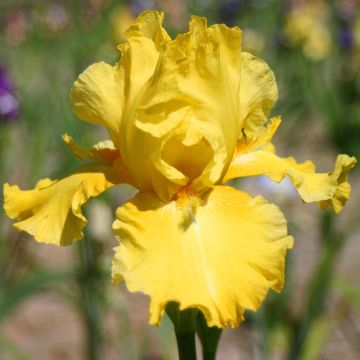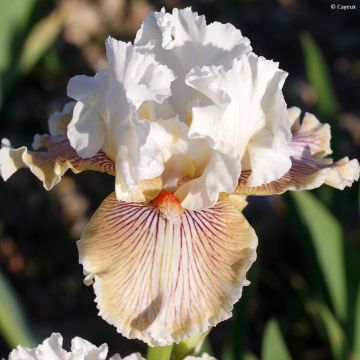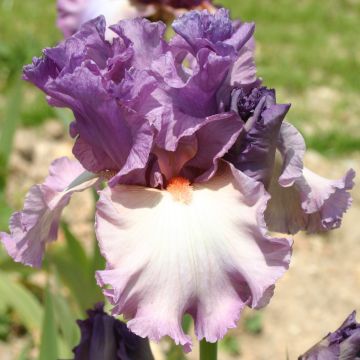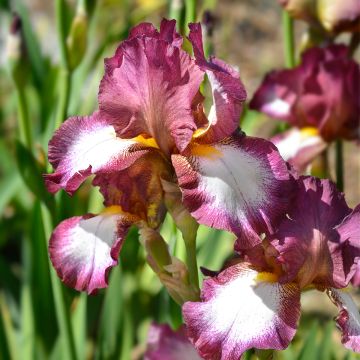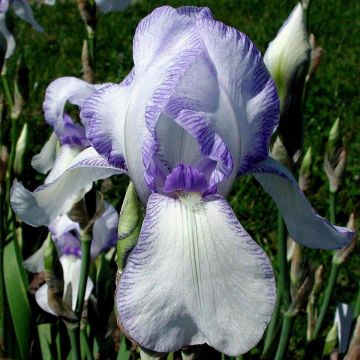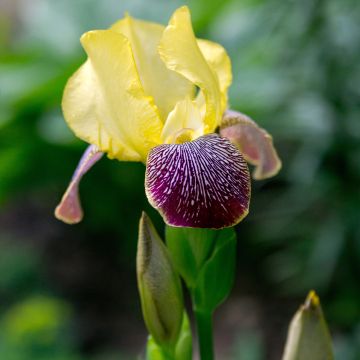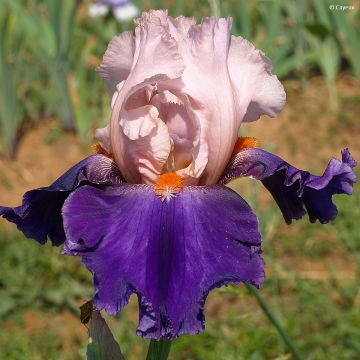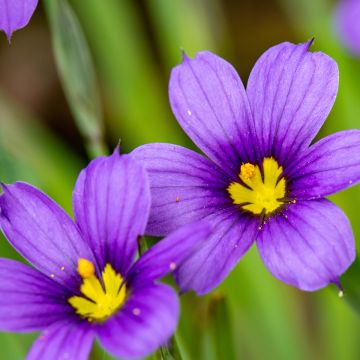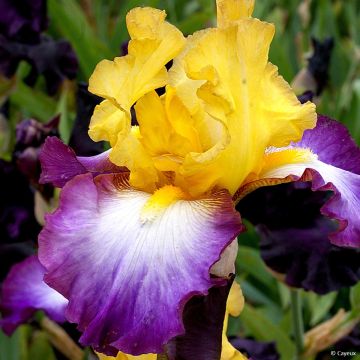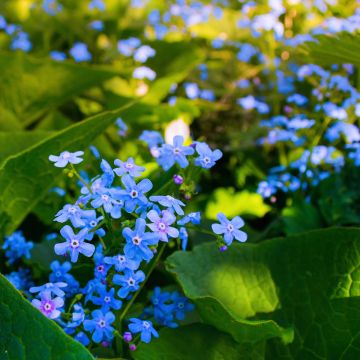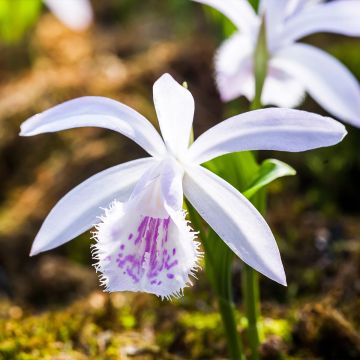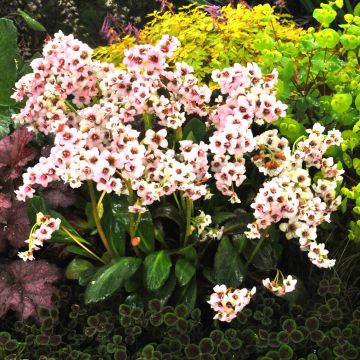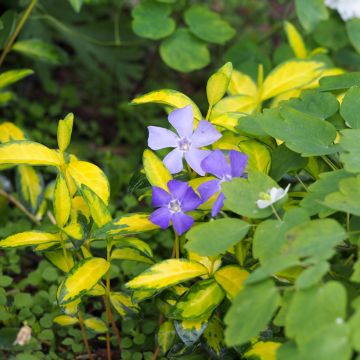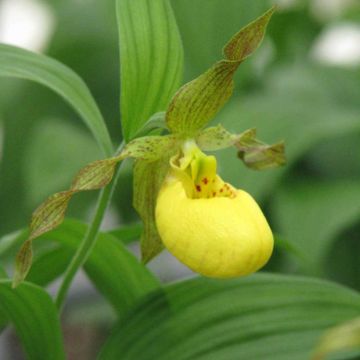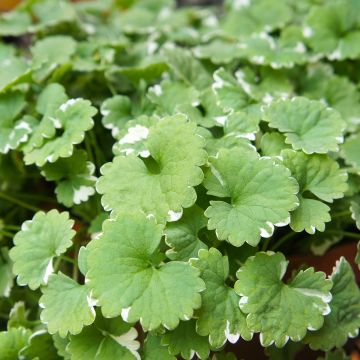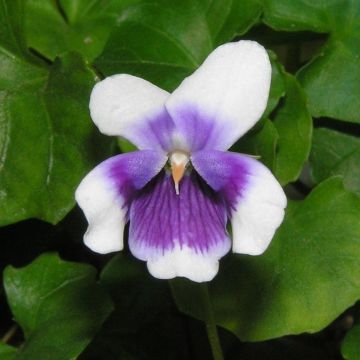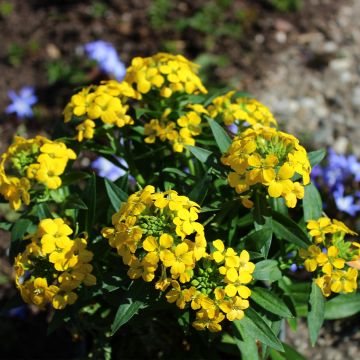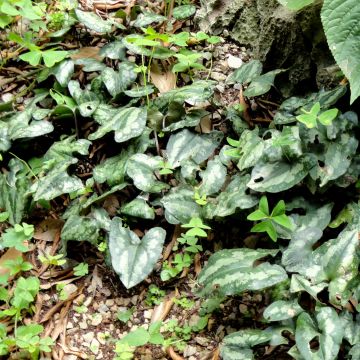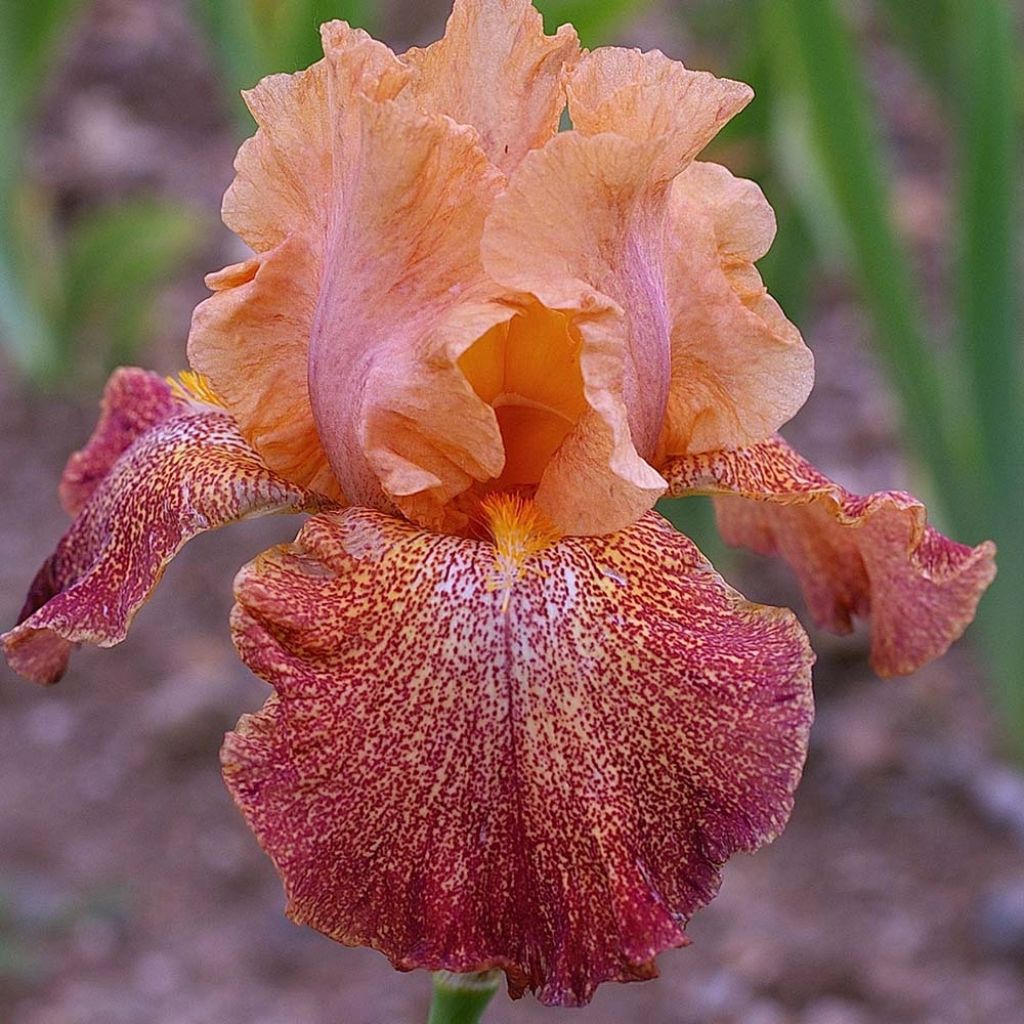

Iris Tanzanian Tangerine - Tall Bearded Iris
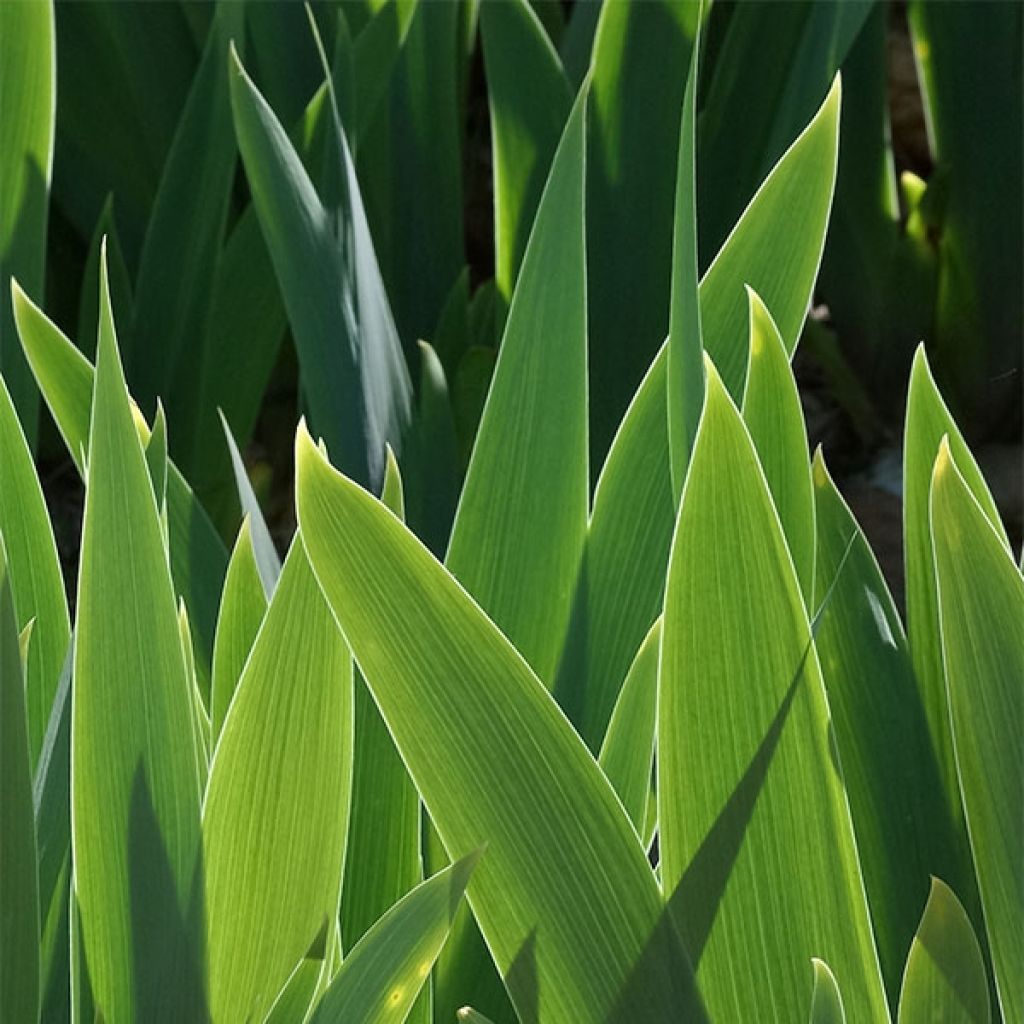

Iris Tanzanian Tangerine - Tall Bearded Iris
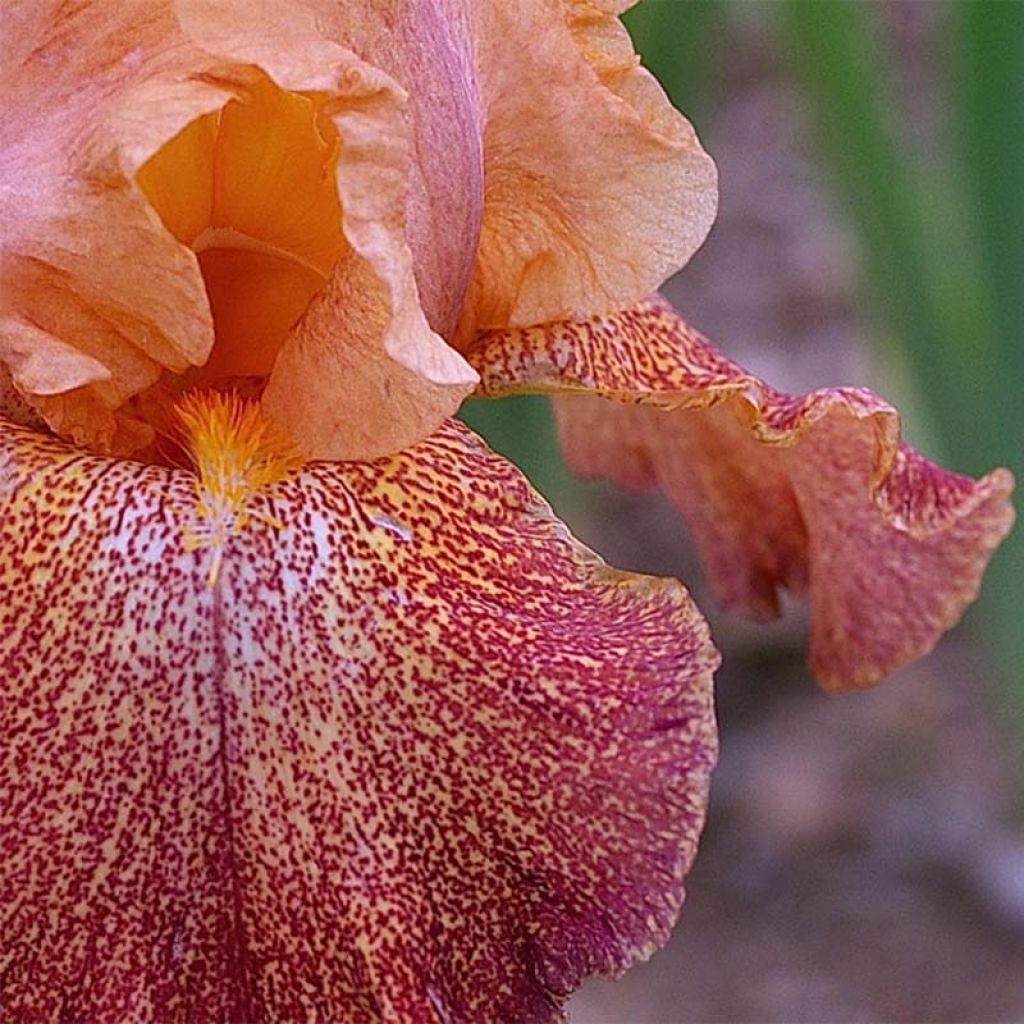

Iris Tanzanian Tangerine - Tall Bearded Iris
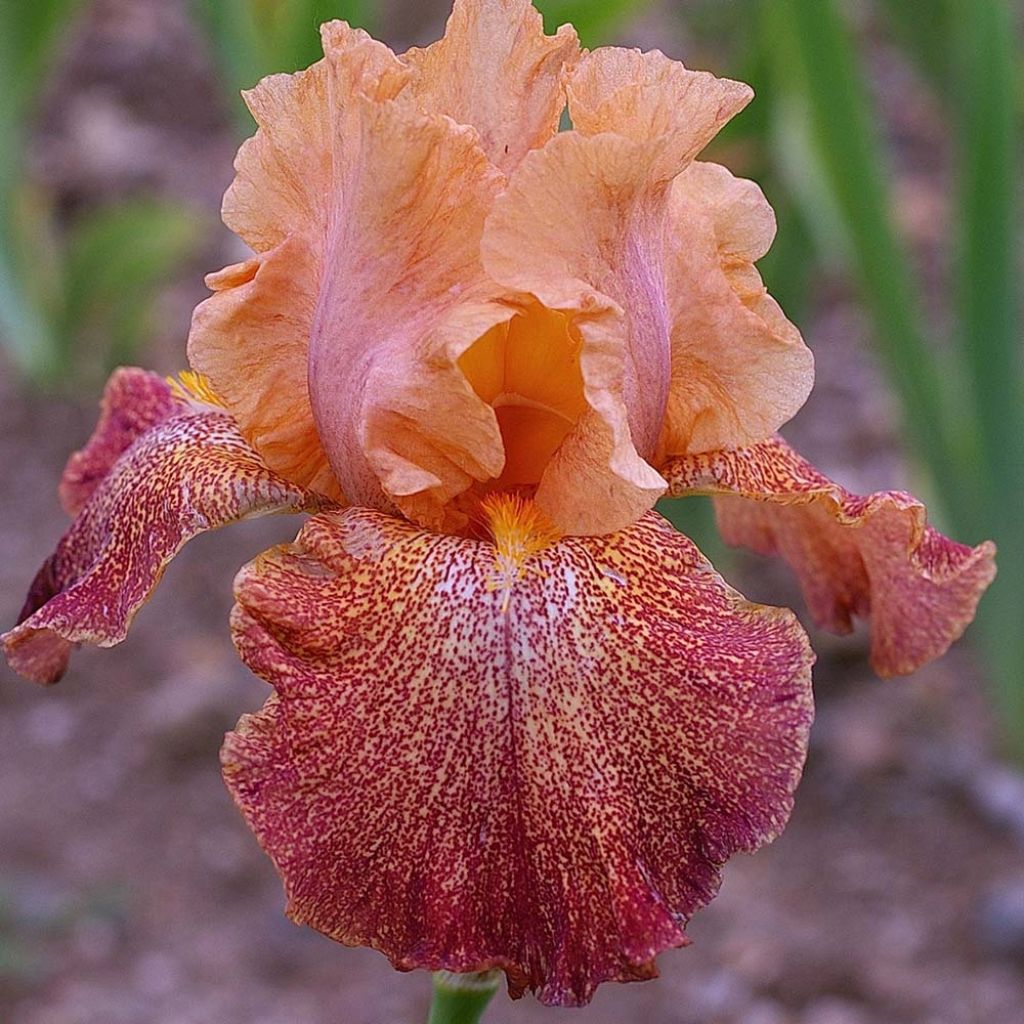

Iris Tanzanian Tangerine - Tall Bearded Iris
Iris Tanzanian Tangerine - Tall Bearded Iris
Iris germanica Tanzanian Tangerine
German Iris, Bearded Iris
As I received my order in a cardboard packaging and everything was therefore overturned with the labels all mixed up inside, I'm not sure if this plant will be beautiful because for now everything is struggling to grow, not a single flower in sight as the plants were very small when I received them... I'm waiting.
Sophie, 25/04/2024
Order in the next for dispatch today!
Dispatch by letter from €3.90.
Delivery charge from €5.90 Oversize package delivery charge from €6.90.
Current delivery delay: 1 day.
More information
This item is not available in your country.
Schedule delivery date,
and select date in basket
This plant carries a 12 months recovery warranty
More information
We guarantee the quality of our plants for a full growing cycle, and will replace at our expense any plant that fails to recover under normal climatic and planting conditions.
From €5.90 for pickup delivery and €6.90 for home delivery
Express home delivery from €8.90.

Does this plant fit my garden?
Set up your Plantfit profile →
Description
Iris 'Tanzanian Tangerine' belongs to the category of "broken colours" Grand Garden Iris, whose flowers are very original. Instead of the usual random streaks observed on the flowers of this type of iris, this one is subtly speckled with wine-coloured spots on the sepals. The beautifully wavy flower combines peach-mandarin upright petals, with orange spotted with wine-coloured red on the sepals. This variety of impressive stature should be placed sheltered from the wind and bad weather that could cause its long flower stems to bend.
Iris 'Tanzanian Tangerine' is a rhizomatous deciduous perennial plant that develops from spring in elegantly upright clumps. It belongs to the Iridaceae family. It is one of the many cultivars obtained over the centuries, whose controversial origin is argued around the number of chromosomes of potential ancestors. It should be noted that Garden Irises have European origins. They thrive in limestone soil and require plenty of sunlight for their rhizomes to "cook" in summer in order to flower. A minimum of 6 hours of sunlight per day is generally required.
'Tanzanian Tangerine' will reach 95 cm (37in) high when in bloom, with several buds per stem. The clump will spread without a theoretical limit over time, with the central rhizomes becoming bare in favour of the outer rhizomes. The foliage consists of long and wide sword-shaped, slightly glaucous green leaves, with parallel veins running through them. It is a mid to late season variety. Flowering stems appear in April and bloom in early May, flowers bloom from the top down to the lower branches. The surprising colour of this plant is magnified by the thick and iridescent texture of the floral parts. At the base of each sepal, towards the heart of the flower, there is a small orange beard.
Bred by Brad Kasparek, 1995.
Awards: Honorable Mention (HM) in 1999.
To accompany irises, choose plants based on their needs (exposure, soil...), vegetation (low-growing plants or light foliage), decorative appearance and flowering time. For example, Gaura will provide little shade to irises and keep the bed attractive throughout the summer. Eschscholzia will tolerate dry soil like irises. Geraniums, salvias, and Libertia also complement irises very well. Slopes and terraced edges will be stabilised by dense plantings of old diploid varieties that require little care. If the goal is more decorative and access for care is possible, you can choose more modern varieties, such as intermediates that are less likely to be knocked down by wind and rain.
At the foot of a wall, the relative shelter from the wind allows for the use of tall irises. Of course, shorter and early-blooming varieties can be planted in the foreground.
Path border: the realm of early dwarf irises under 40 cm (16in), up to intermediates (in size and earliness) and border irises, which are medium-sized but flower with the tall ones.
Mass planting border: the domain of border irises but also dwarfs, depending on the circumstances.
Mixed border: the entire range of sizes can be used, chosen according to the position (foreground, background) and the size of the surrounding plants.
Iris bed, iris garden: the paradise of iris enthusiasts, where the choice of varieties reflects each person's taste. The use of the range of bearded irises allows for two and a half months of flowers in spring. The choice of so-called reblooming irises offers a few additional flowers in late summer or autumn, depending on the climate.
The vegetable garden can be adorned with a few clumps or borders of irises for cutting.
Report an error about the product description
Iris Tanzanian Tangerine - Tall Bearded Iris in pictures




Flowering
Foliage
Plant habit
Botanical data
Iris
germanica
Tanzanian Tangerine
Iridaceae
German Iris, Bearded Iris
Cultivar or hybrid
Other German Iris - Bearded Iris
Planting and care
Iris germanica should be planted in summer, in August-September, when the rootstocks are at rest. They require a well-drained, lime-rich soil that does not retain too much water. Allow for appropriate spacing according to the size and vigour of the variety: approximately 34-50 cm (13-20in) for larger ones. Dig a hole that is wide and deep enough. Create a conical mound of soil on which to place the rhizome and spread out the roots. Cover the roots. It is important for the rhizome to be left slightly above the surface of the soil. It should not be planted in a dip (risk of rot), so anticipate that the soil will settle and the iris will sink. In clayey or damp soil, the rhizome should even be left elevated on a slight mound. To ensure the soil adheres to the roots, lightly compact and water thoroughly after planting. Water 2-3 times if necessary until the plants are established. For a mix of colours, plant them in groups of several plants of the same variety. Always consider the direction of growth of the rootstocks by arranging them in a star shape, with buds and leaves facing outward, and space them well away from other varieties so they have room to develop.
As soon as the flower stalks appear, watch out for attacks from slugs and snails, which can completely destroy a flower stalk overnight.
Planting period
Intended location
Care
-
, onOrder confirmed
Reply from on Promesse de fleurs
Spring flowering perennials
Haven't found what you were looking for?
Hardiness is the lowest winter temperature a plant can endure without suffering serious damage or even dying. However, hardiness is affected by location (a sheltered area, such as a patio), protection (winter cover) and soil type (hardiness is improved by well-drained soil).

Photo Sharing Terms & Conditions
In order to encourage gardeners to interact and share their experiences, Promesse de fleurs offers various media enabling content to be uploaded onto its Site - in particular via the ‘Photo sharing’ module.
The User agrees to refrain from:
- Posting any content that is illegal, prejudicial, insulting, racist, inciteful to hatred, revisionist, contrary to public decency, that infringes on privacy or on the privacy rights of third parties, in particular the publicity rights of persons and goods, intellectual property rights, or the right to privacy.
- Submitting content on behalf of a third party;
- Impersonate the identity of a third party and/or publish any personal information about a third party;
In general, the User undertakes to refrain from any unethical behaviour.
All Content (in particular text, comments, files, images, photos, videos, creative works, etc.), which may be subject to property or intellectual property rights, image or other private rights, shall remain the property of the User, subject to the limited rights granted by the terms of the licence granted by Promesse de fleurs as stated below. Users are at liberty to publish or not to publish such Content on the Site, notably via the ‘Photo Sharing’ facility, and accept that this Content shall be made public and freely accessible, notably on the Internet.
Users further acknowledge, undertake to have ,and guarantee that they hold all necessary rights and permissions to publish such material on the Site, in particular with regard to the legislation in force pertaining to any privacy, property, intellectual property, image, or contractual rights, or rights of any other nature. By publishing such Content on the Site, Users acknowledge accepting full liability as publishers of the Content within the meaning of the law, and grant Promesse de fleurs, free of charge, an inclusive, worldwide licence for the said Content for the entire duration of its publication, including all reproduction, representation, up/downloading, displaying, performing, transmission, and storage rights.
Users also grant permission for their name to be linked to the Content and accept that this link may not always be made available.
By engaging in posting material, Users consent to their Content becoming automatically accessible on the Internet, in particular on other sites and/or blogs and/or web pages of the Promesse de fleurs site, including in particular social pages and the Promesse de fleurs catalogue.
Users may secure the removal of entrusted content free of charge by issuing a simple request via our contact form.
The flowering period indicated on our website applies to countries and regions located in USDA zone 8 (France, the United Kingdom, Ireland, the Netherlands, etc.)
It will vary according to where you live:
- In zones 9 to 10 (Italy, Spain, Greece, etc.), flowering will occur about 2 to 4 weeks earlier.
- In zones 6 to 7 (Germany, Poland, Slovenia, and lower mountainous regions), flowering will be delayed by 2 to 3 weeks.
- In zone 5 (Central Europe, Scandinavia), blooming will be delayed by 3 to 5 weeks.
In temperate climates, pruning of spring-flowering shrubs (forsythia, spireas, etc.) should be done just after flowering.
Pruning of summer-flowering shrubs (Indian Lilac, Perovskia, etc.) can be done in winter or spring.
In cold regions as well as with frost-sensitive plants, avoid pruning too early when severe frosts may still occur.
The planting period indicated on our website applies to countries and regions located in USDA zone 8 (France, United Kingdom, Ireland, Netherlands).
It will vary according to where you live:
- In Mediterranean zones (Marseille, Madrid, Milan, etc.), autumn and winter are the best planting periods.
- In continental zones (Strasbourg, Munich, Vienna, etc.), delay planting by 2 to 3 weeks in spring and bring it forward by 2 to 4 weeks in autumn.
- In mountainous regions (the Alps, Pyrenees, Carpathians, etc.), it is best to plant in late spring (May-June) or late summer (August-September).
The harvesting period indicated on our website applies to countries and regions in USDA zone 8 (France, England, Ireland, the Netherlands).
In colder areas (Scandinavia, Poland, Austria...) fruit and vegetable harvests are likely to be delayed by 3-4 weeks.
In warmer areas (Italy, Spain, Greece, etc.), harvesting will probably take place earlier, depending on weather conditions.
The sowing periods indicated on our website apply to countries and regions within USDA Zone 8 (France, UK, Ireland, Netherlands).
In colder areas (Scandinavia, Poland, Austria...), delay any outdoor sowing by 3-4 weeks, or sow under glass.
In warmer climes (Italy, Spain, Greece, etc.), bring outdoor sowing forward by a few weeks.


































